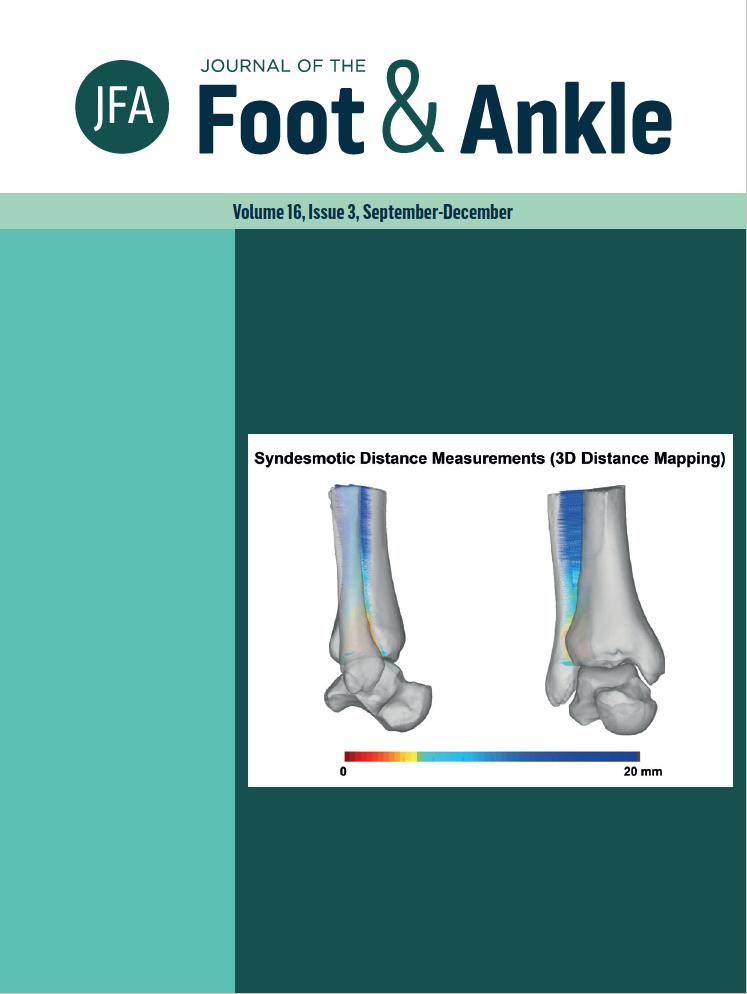Effects of the SARS-CoV-2 pandemic on the incidence of surgically treated fractures in Sao Paulo city
DOI:
https://doi.org/10.30795/jfootankle.2022.v16.1666Keywords:
COVID-19, Fractures, bone, Hospitalization, Pandemics, SARS-CoV-2Abstract
Objective: Evaluate the effect of the SARS-CoV-2 pandemic in the two years since it started. Methods: Retrospective study to analyze the complex structured data set of high volume and variability (Big Data) publicly available on the TabNet platform (DATASUS) through artificial intelligence software. The results of foot and ankle fractures, all lower limb fractures, and all body fractures were analyzed comparatively from 2018-2019 to 2020-2021. Result: The isolated fibula fracture suffered the greatest decrease from 2018-2019 to 2020, and the malleolar fracture presented the highest increase in this period. All fractures showed an increase in 2021 compared to 2020. Except for the distal tibial articular and the talar fractures, the length of hospital stay decreased for all other fractures and the malleolar fracture, remaining up to 36% fewer days hospitalized. Conclusion: COVID-19 pandemic initially decreased the incidence of surgically treated fractures in most fracture patterns, but this effect was not maintained in the second year of the pandemic. The length of hospital stay of these patients decreased in the two years of the pandemic compared to 2018-2019. Level of Evidence II; Retrospective Study; Economic and Decision Analyses - Developing an Economic or Decision Model.
Downloads
Published
How to Cite
Issue
Section
License
Copyright (c) 2022 Journal of the Foot & Ankle

This work is licensed under a Creative Commons Attribution-NonCommercial 4.0 International License.







